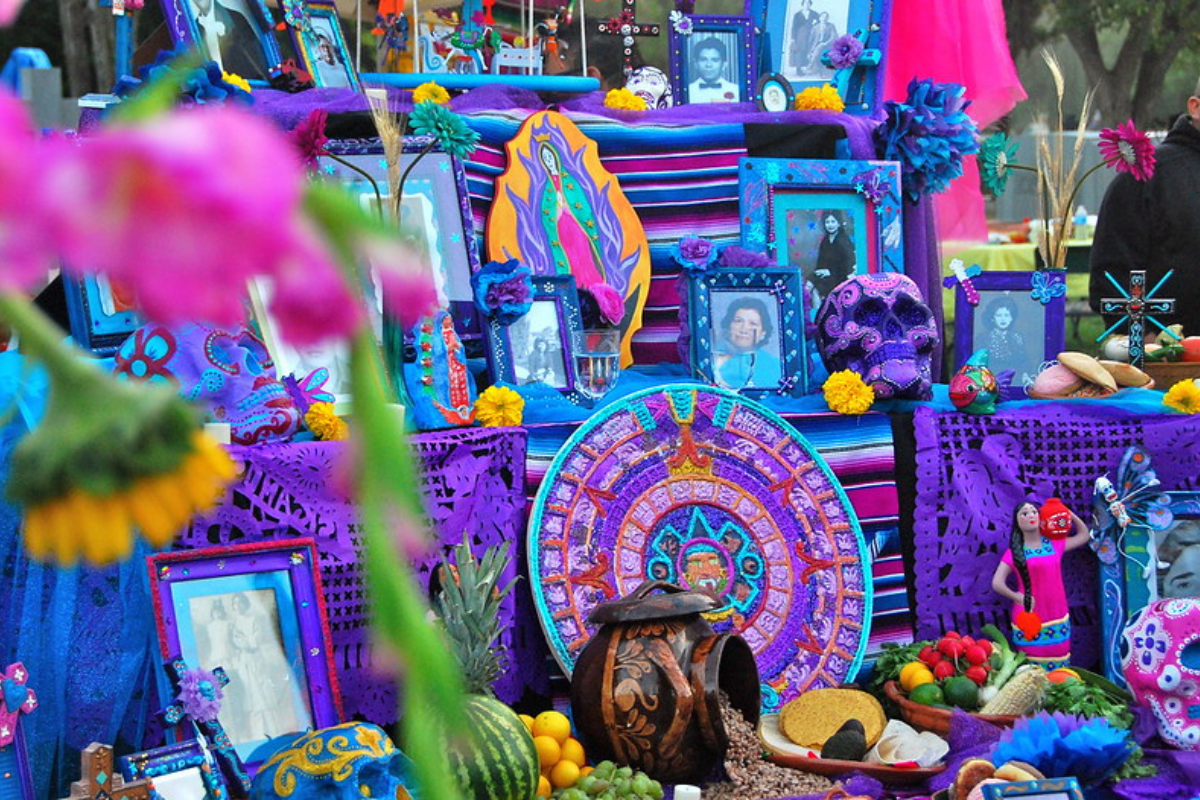Celebrating graduates, AmeriCorps members already hired for the fall or moving into teaching careers, and more!
Honoring Día de los Muertos Ancient History from Millennia Ago

Allow me to introduce myself! I am Tahlia Lucero – guest writer, CYC Development Associate, and someone excited to share more about the upcoming ancient holiday named Día de los Muertos (Día de Muertos in Mexico). I celebrate this holiday with my family’s own ofrenda. While this holiday is typically not taught in school curriculum, I am passionate to share more details surrounding the origins and history of the Day of the Dead holiday with those in the CYC community. This celebratory tradition first originated thousands of years ago among the indigenous peoples like the Aztecs, Maya, Zapotecs, Mixtecs and Toltecs. A common symbol of cultural heritage for Latine, Indigenous, and Mexican communities is to hold family as an important tenet of life, continuing to recognize ancestors both while they are here on Earth and after they have departed from this world. Death rites and similar celebrations have remained prominent in both indigenous and Mexican traditions, establishing a strong relationship between the bonds of family members and those who are in the spirit world.
For members of these communities, death is recognized as an integral component of life, and paying homage to their ancestors honors the life cycles that brought the generations of today. Similarly, they recognize that death is not the end of an ancestor’s legacy as families can reconnect with loved ones once a year. Their lives are celebrated by their contributions, memories, and family members. In many households, altars are made to continue welcoming the loved ones through their pictures with many adorning decorations of candles, foods, musical instruments, papel picado, yellow marigold flowers, and skulls.
The pervasive skull imagery we know today was inspired from illustrations of Calavera Catrina, a female skeleton adorned with a large plume hat, by Mexican artist Jose Guadalupe Posada. His drawings illustrated the cultural changes of European bourgeoisie-like attire and lifestyle influences that were beginning to infiltrate the social classes in Mexico. Shortly after Posada’s death in 1913, his calaveras (skulls) become a symbol for the Day of the Dead.
This ancient holiday is traditionally celebrated on November 1 and 2, but those outside of Mexico may begin the celebration as early as October 31st and as late as November 6 for countries like Bolivia, Peru, and Haiti. The holiday has grown in popularity in the public eye, especially with the influence of pop culture and changing demographics with Latine peoples now becoming the largest ethnic group in the United States.
Events and Education
Some schools have taken part in this holiday allowing students to learn about the narratives surrounding this sacred holiday to be appreciated and not appropriated. This also serves as a teaching point to allow students who are Latine to feel represented and supported within school culture. Many have shown films like 20th Century Fox’s The Book of Life and Disney’s Coco to embrace this special day. At home, families can take part by making their own paper mache calveras (skulls), picking up pan de muertos (Day of the Dead bread) from a local panderia (bakery), and taking part in a community altar by helping decorate an ofrenda (offering).
In the Denver Metro area, dozens of events take place to learn and celebrate. The Día de los Muertos festival is hosted annually by the Denver Botanic Gardens allowing families to view colorful ofrendas (offerings) on altars from community members and artists and enjoy dance performances by Mexican folk dance groups. This year’s event at the Denver Botanic Gardens starts on November 5 at 8 a.m. The Center on Colfax hosts a Día de los Muertos drag show on October 29 with traditional Mexican food, art-making, and performers. Finally, the Denver Public Library is hosting a sugar skull decorating workshop on November 2.
The Day of the Dead continues to honor and keep alive the memories of the departed, allowing the spirits of the ancestors to celebrate among the living for one night. Colorado has one of the highest percentages of Latine populations, representing over 20% of the state and over 35% of Denver. It is important to recognize that non-Latine community members can celebrate this holiday, but to do so in a respectful manner. We’d love to hear how you and your family celebrate Día de los Muertos. Contact us on social media or email us anytime at info@youthforachange.org!
